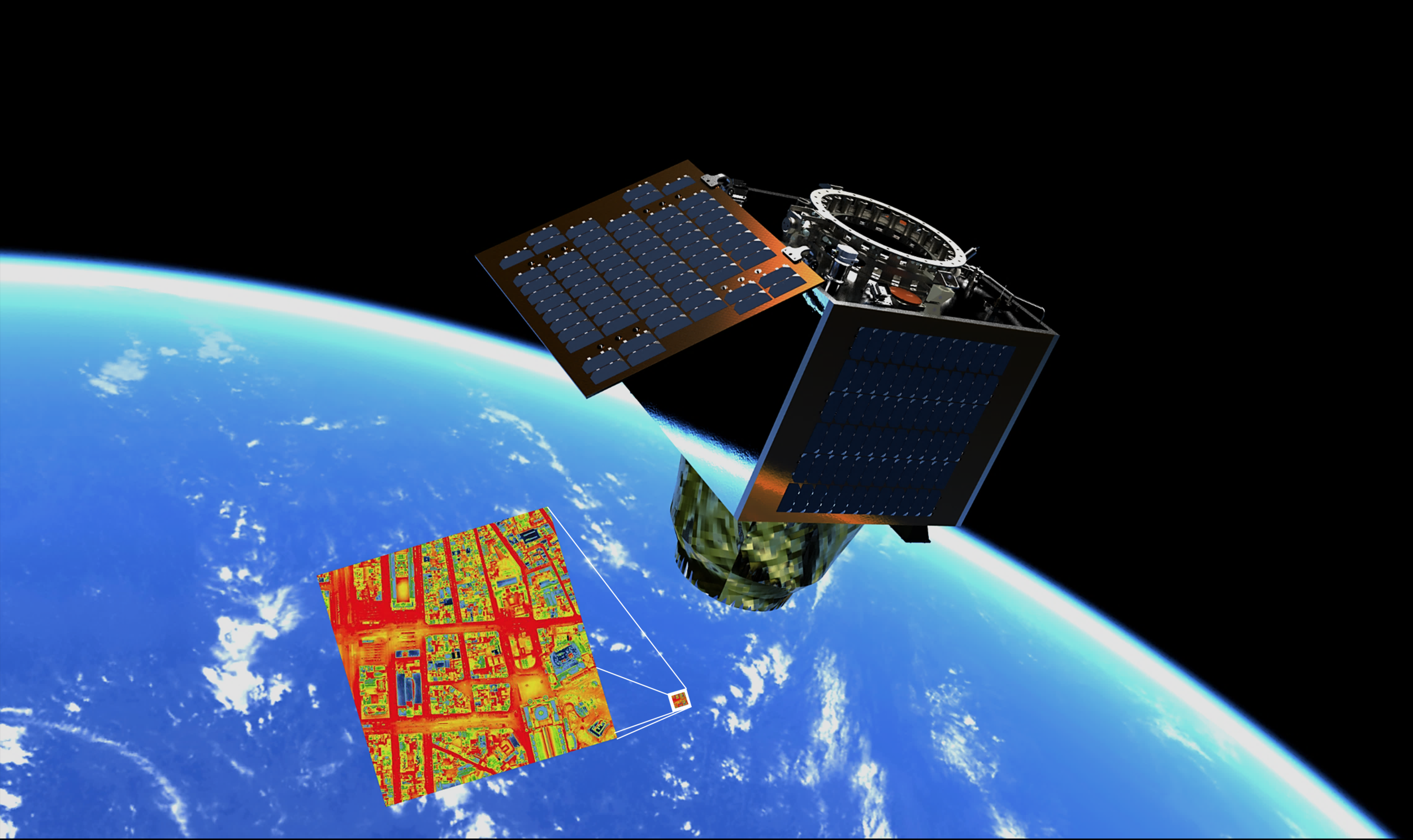Satellite Vu confronts climate change, offering a solution for reducing carbon emissions
Credit: SSTL
In the wake of the latest IPCC report, media across the world have reacted, stressing the pivotal report’s unequivocal evidence that ultimately points the finger at us, mankind, as the cause of the 1.09C temperature increase on our planet. Headlines report the publication to be “a code red for humanity”, these stark words illustrated with images of natural disaster and destruction that we are undeniably responsible for.
IPCC author Professor Piers Forster from the University of Leeds said he and his fellow authors are “really certain” that near-term emissions cuts can “really reduce the rate of unprecedented warming”; but whilst this scientific report has made the cost of our actions on our planet very clear, there still remains some uncertainty for consumers and businesses as to what is the first and most essential action they must take in order to aid green recovery; quantitative guidance and verifiable measurement is missing.
“Energy efficiency is the ‘first fuel’ for achieving high ambition climate goals" (International Energy Agency)
To determine what is the most beneficial course of action we must look first at the essence of the problem; the burning of fossil fuels for heat, electricity and transport, produces carbon emissions which are released into our atmosphere where it traps solar radiation and subsequently increases the earth’s surface temperature. This rise in global surface temperature has brought with it many dire consequences; scorching heatwaves have generated uncontrollable wildfires that waged destruction across Greece, Africa, North America and Siberia. July 2021 is the world’s warmest month in recorded history as well as the worst July on record for wildfires, and so unsurprisingly the EU’s Copernicus Atmosphere Monitoring Service has found the carbon release from the wildfires last month to be an estimated 343 megatonnes of carbon, the highest global total since records began in 2003. Thus, we are creating a perpetual cycle of carbon emissions that must be broken.
Whilst here in the UK we might feel we have escaped such apocalyptic scenes of climate change, we cannot ignore the unusually unpredictable and bipolar weather we have experienced in the UK this summer. For the first time in history, the year 2020 was in the top ten for the warmest, wettest and sunniest weather, and scientists predict weather such as this could very soon become the new norm, as the extremes are heightened, the hot days will be even hotter and the wet ones wetter. So we must not be complacent in believing we are immune from the effects of climate change as our near future holds more flash flooding, droughts and searing heat that the UK is simply not prepared to face.
Taking Action
The UK, as one of the worst contributors to carbon emissions we must ensure our heating and use of electricity is efficient. This may seem an obvious and simple solution yet the potential to reduce carbon emissions is significant. While we all hold a degree of responsibility for our own contributions to climate change through our lifestyles and household emissions, it is imperative to locate the worst culprits on a larger-scale in order for countries to meet their climate targets. We have all heard that electrification of transport is part of the mitigating actions we can all take but we need to take greater action than buying an electric car; buildings account for around 40% of all CO2 emissions and installing a heat pump to reduce emissions is equally as important are arguably a more cost effective mitigation action we can all take. The challenge is which buildings should we upgrade first.
Satellite Vu are poised to make a difference with their technology at a building-level. The company will launch a constellation of infrared satellites to monitor the heat emissions from any structure on the planet in near real time to determine valuable insights into economic activity, energy efficiency and carbon footprint. The information Satellite Vu’s satellites are able to provide is invaluable in today’s culture of so called “greenwashing”, a process of supplying disingenuous information to their customers that is carried out by businesses in order to mislead consumers into believing a company is green or environmentally friendly.
Satellite Vu is capable of identifying such companies that are exaggerating their green practices or perhaps companies that are simply unaware of the inefficiency of their buildings. Social responsibility to be green will increasingly become a high priority on the agenda of all companies, and using city maps with different insight layers and 3D thermal models Satellite Vu can help such companies navigate their energy efficiency and advise where they should begin on their journey to running a green and smart business. Satellite Vu’s technology is cost effective and eliminates an arduous and expensive process of assessing buildings manually, and with the use of the infrared satellites providing information and insights quickly, Satellite Vu will help lower carbon emissions and support decarbonisation economically. While existing satellite technology can estimate carbon from large features such as wildfires or other greenhouse gas emissions such as methane, the IEA roadmap to Net Zero reports that energy efficiency of the built environment is an even more powerful mitigation to reducing emissions of greenhouse gases than reducing methane emissions from the energy sector.
World governments will meet this November in Glasgow, at the COP26 UN climate summit, to try to agree a way of preventing the world from heating by more than 1.5C above pre-industrial levels. We can only hope in light of this report that our world leaders make decisive and immediate action. According to the IEA “Energy efficiency is the ‘first fuel’ for achieving high ambition climate goals, improving quality of life and creating jobs.” Therefore, we must be proactive and look to new technologies to aid us in this climate crisis in order to make a much needed difference.
By Isobel Gray and Emily Baker


